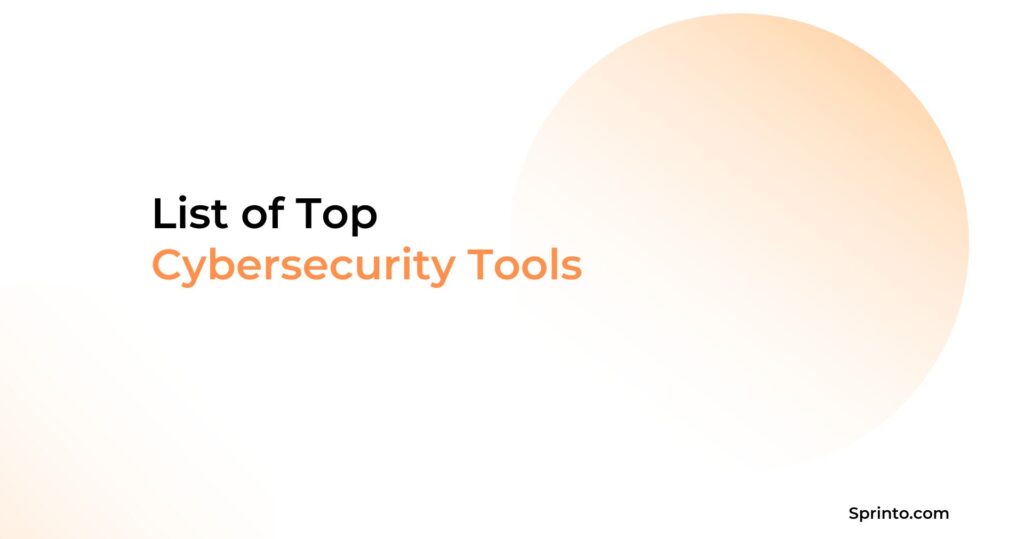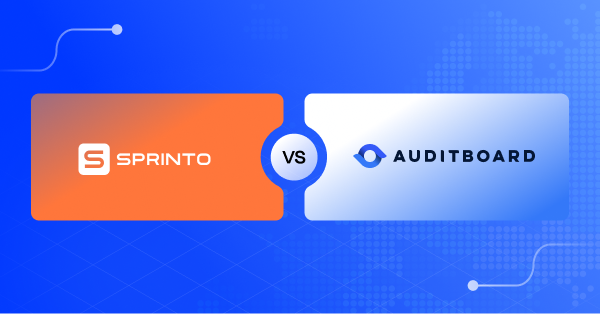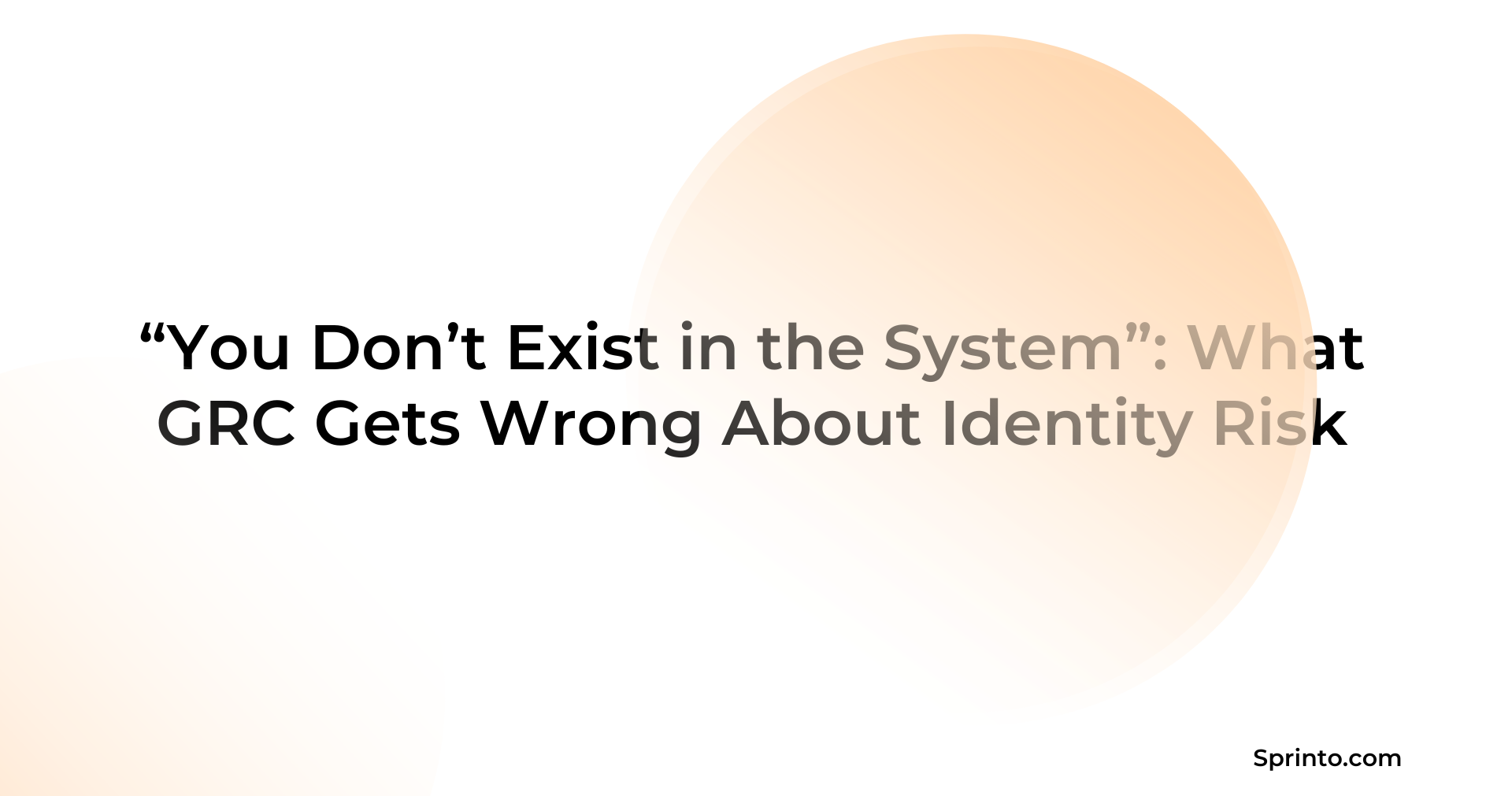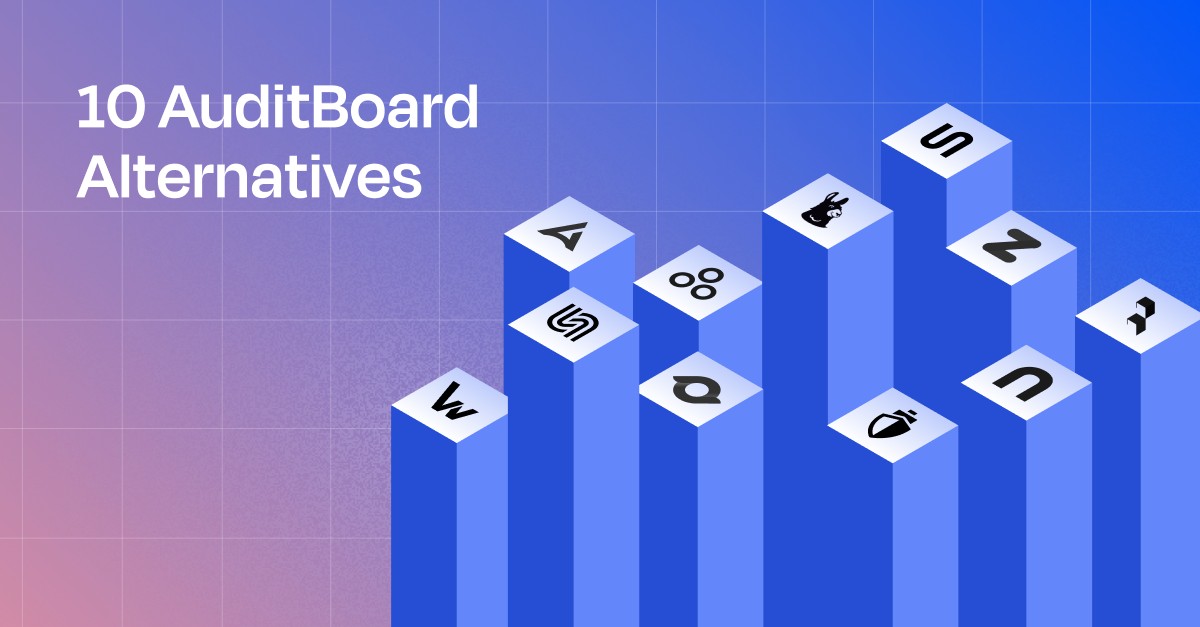Why Vulnerability Management Matters:The Silent Threats That Lurk In Your System:
Heer Chheda
Dec 02, 2024
Vulnerabilities are silent gaps, tiny holes in your armor, that can put even the most secure organization at risk. Every line of code and update you deploy introduces huge risks.
These potential vulnerabilities are not just coding errors but windows for adversaries to exploit and, ultimately, the trust you’ve worked hard to build.
To fix these gaps, you need to manage your vulnerabilities, a process called vulnerability management. Vulnerability management is the process of identifying, assessing, and addressing security vulnerabilities in your systems.
In this article, let’s look at what vulnerability management entails in detail.
TL;DR
| Managing vulnerabilities starts with understanding your digital environment. So, identify assets, map your attack surface, and ensure no common vulnerabilities go unnoticed. |
| Not every vulnerability is equal. Focus on the ones that pose the highest risk to your security team by assessing their impact, exploitability, and the threat landscape. |
| Streamline your cyber vulnerability management process with automated tools that handle detection, prioritization, and remediation—keeping your systems secure while saving time and effort. |
What is vulnerability management?
Vulnerability management is a continuous process, often automated, of identifying, assessing, prioritizing, and addressing the weak spots in your system. It is a continuous, proactive process that keeps pace with the cyber threats and security vulnerabilities. It keeps you safe from cyberattacks and breaches on your system.
In practice, vulnerability management means regularly evaluating your systems, applying critical patches, and ensuring that the cyber security measures you have are effective and updated.
An effective vulnerability management relies on a structured approach that consists of four key stages.
Importance of vulnerability management
Vulnerability management is important because it serves as your frontline defense against cyber threats. For most companies these days, VAs are not just worthy suggestions but mandatory measures aligned with GDPR, PCI DSS, and HIPAA.
However, vulnerability management also informs you of your insecurity outlook, which makes it easy to address areas of risk before attackers exploit them. It helps evolve your network from a vulnerable point to an invulnerable stronghold.
4 Stages of the vulnerability management process
The process of vulnerability management is organized into four essential steps, each designed to ensure that your organization stays ahead of the threats.

Step 1: Vulnerability discovery
The first step is to identify all assets within your organization – every server, application, device, and network component that might be susceptible to vulnerability. Think of it like conducting risk assessments. While the nuances in the steps will vary from organization to organization, here’s a basic skeleton you can follow:
- Identify all the devices (servers, workstations, mobile devices, IoT devices)
- Map all the software applications and network components like firewalls, routers, switches, etc.
- Use an automated asset discovery tool to scan your network regularly.
- Watch out for shadow IT, any unsanctioned tools or systems should be flagged immediately.
- Classify these assets based on criticality, sensitivity, and compliance requirements like SOC2, HIPAA, PCI-DSS.
- Map connections between assets to identify potential attack paths and highlight any exposed system accessible from the internet.
- Create documentation to serve as a baseline.
- Sync IT systems like SIEM or CMDB, for better visibility.
Note: Classification helps in prioritizing vulnerabilities to address first. Prioritize risks and vulnerabilities based on the risk appetite of your organization.
Mitigate vulnerabilities with Sprinto
Step 2: Vulnerability assessment
The second stage of vulnerability management is assessment, where all the assets you identified in step 1, are analyzed and scrutinized to identify vulnerabilities and security weaknesses. There are lot of ways in which you can conduct these assessments, namely:
- Automated vulnerability scanning tools like Rapid7, OpenVAS
- Penetration testing
- Configuration assessment
- Manual code reviews
- Threat intelligence integration
- Red team assessments
- Baseline comparison
- Patch management audit
- Endpoint detection analysis
- Application security testing
Using these methods, the findings are then compared against a database of known vulnerabilities, to understand the severity. A high-severity vulnerability in a business operation might pose a far greater threat than multiple low-severity issues in less critical assets.
Step 3: Vulnerability prioritization
You need to prioritize mitigation efforts considering the risk appetite of your organization as well as the severity of the risk itself. Because not all vulnerabilities pose the same threat, applying remediating efforts on all fronts will waste your resources or leave critical systems exposed.
For example: Let’s say your scanner flags Log4Shell (CVE-2021-44228), a critical flaw in the Log4j logging library. This vulnerability lets attackers run malicious code remotely and has a maximum severity score of 10.0. If it’s found in an internet-facing application that handles customer data, fixing it should be your top priority because it’s easy to exploit and could lead to a serious breach.
On the other hand, if you discover a minor vulnerability in an outdated internal tool—one that only leaks harmless information and has no known exploits—it can wait until your next scheduled updates. By tackling Log4Shell first, you focus your efforts on the most urgent risk, ensuring critical systems stay secure.
Essentially, effective prioritization considers the exploitability of the vulnerability itself. As in, whether the risk is active exploits in the wild or if the proof-of-concept code is available. The context of each vulnerability is crucial.
Step 4: Vulnerability Remediation
This stage is where you take corrective actions, like applying patches, reconfiguring systems, or implementing additional security controls to mitigate the vulnerabilities. Remediation techniques usually fall under five buckets of control, preventive, detective, corrective, administrative, and mitigative.

Preventive controls:
- Patch management
- Access control
- Encryption
Detective controls:
- Intrusion detection systems
- SIEM solutions
- Threat Intelligence feeds
Mitigative controls:
- Network segmentation
- Web application firewall
- Multi-factor authentication
Corrective controls:
- Incident response plans
- Virtual planning
- System hardening
Administrative controls:
- Security and awareness training
- Change management policies
- Regular audits
In practice, remediation efforts often begin with patch management, applying vendor-released fixes for software vulnerabilities. For issues where patches are unavailable, alternative measures like disabling features, or restricting access, can be implemented.
In cases where remediation isn’t immediately feasible, you can also implement mitigation strategies, like isolating the affected system or increasing monitoring until a permanent patch is applied.
Remediate threats with Sprinto
Challenges with vulnerability management lifecycle
Managing vulnerabilities might not be as straightforward as you might think. One of the biggest struggles with vulnerability management lifecycle you might face is maintaining visibility across your entire environment.
Struggle for visibility
With systems, applications, and devices constantly changing, it’s easy to lose track of what’s out there. Shadow IT—those unauthorized tools or software that pop up without your knowledge—only makes things harder.
Challenge of prioritization
Another tough part is figuring out what to tackle first. Vulnerability scans can flood you with data, and not every issue is an emergency. But deciding what needs immediate attention isn’t always clear-cut. Maybe there’s a critical vulnerability in a system that’s too important to take offline for patching.
Balancing business needs
Or perhaps business leaders are hesitant to disrupt operations, even if it means leaving a risk unaddressed for a little longer. Balancing security and business needs is a constant push-and-pull, and it takes collaboration to get it right.
Limited availability of resources
Then there’s the actual work of fixing vulnerabilities. Even if you know what needs to be done, limited time, resources, or budget can slow things down. Some vulnerabilities don’t even have patches available, forcing you to come up with temporary fixes
These challenges highlight why cyber vulnerability management requires a thoughtful and systematic approach. To get through this process successfully, you need to know how vulnerability management works at each stage.
How does Vulnerability management work?
Vulnerability management systems combine tools and processes to identify, assess, and address security risks. It starts with asset discovery and inventory to map all devices, software, and systems in your organization. With tools like vulnerability scanners, you can pinpoint weaknesses, such as unpatched software or misconfigurations, and use patch management systems to deploy updates efficiently.

Beyond patching, configuration management ensures systems stay secure and compliant, while SIEM solutions monitor for suspicious activity. Penetration testing uncovers deeper risks, and threat intelligence keeps you informed of emerging threats. The final step, remediation, focuses on prioritizing and fixing vulnerabilities to strengthen your security posture.
Once you understand these tools and steps, frameworks for vulnerability management can help bring structure to the process, guiding your efforts from discovery to remediation in an organized, effective way.
Frameworks For Vulnerability Management
Frameworks provide a structured way to handle everything—from identifying risks to fixing them—so you’re not just reacting to issues as they come up. They help you follow best practices, stay organized, and ensure nothing slips through the cracks. Whether you’re dealing with IT systems, networks, or applications, these frameworks give you a reliable process to follow.
ISO/IEC 27001
ISO/IEC 27001 is an internationally recognized standard for managing information security. It helps you create a structured approach to protecting your organization’s data and systems. A key part of this standard involves identifying vulnerabilities through regular risk assessments, so you know where your biggest risks are.
Once those vulnerabilities are identified, ISO 27001 requires you to implement the right controls to address them. This all happens within your Information Security Management System (ISMS)—a framework you use to manage and improve your organization’s overall security posture. It’s a methodical way to ensure vulnerabilities aren’t just identified but are actively addressed to keep your systems secure and compliant.
PCI-DSS
PCI DSS, or the Payment Card Industry Data Security Standard, is all about protecting payment card information. If your organization handles cardholder data, this standard requires you to stay on top of vulnerabilities to ensure that sensitive information stays secure.
One of its key requirements is regular vulnerability scans to identify and address potential weaknesses in your systems. It also emphasizes maintaining secure configurations, so your systems are set up in a way that minimizes risk. Essentially, PCI DSS doesn’t just suggest good practices—it mandates them, ensuring that your vulnerability management processes are thorough and consistently applied to protect both your business and your customers.
NIST Cybersecurity Framework (CSF)
The NIST Cybersecurity Framework (CSF) is a go-to resource for managing cybersecurity vulnerabilities in a structured and practical way. It’s built around five key functions—Identify, Protect, Detect, Respond, and Recover—that guide you through every aspect of securing your organization. When it comes to vulnerability management, NIST places a strong emphasis on the Identify and Protect stages.
CIS controls
The CIS Controls, created by the Center for Internet Security, are essentially a prioritized checklist to help you strengthen your cybersecurity defenses. They’re designed to focus your efforts on the most important actions, so you’re not overwhelmed trying to do everything at once.
When it comes to vulnerability management, Control 3: Continuous Vulnerability Management is the one you’ll rely on. It emphasizes the importance of regularly scanning your systems, assessing the risks you find, and taking action to fix them.
While traditional vulnerability management focuses on identifying and addressing every potential weakness, the sheer volume of vulnerabilities can make this approach overwhelming. And that’s where risk based vulnerability management comes in.
Risk-based vulnerability management
Risk-based vulnerability management (RBVM) is about prioritizing vulnerabilities based on their potential impact on your organization. Instead of addressing every issue equally, you assess each vulnerability’s severity, the likelihood of exploitation, and the criticality of the systems it affects. This approach helps you focus on what truly matters, ensuring that your resources are spent where they’ll have the greatest impact.
By adopting RBVM, you can make more informed decisions, addressing the most pressing risks first while minimizing disruptions to your operations. It’s a practical way to reduce overall risk without getting bogged down by less critical issues. This approach not only improves your security posture but also aligns your efforts with your business’s unique priorities and risk tolerance.
Get A Real Time View Of Risk
Managing vulnerabilities can quickly become overwhelming if you’re relying on manual processes. That’s why vulnerability management tools can be a game-changer. The automation process streamlines everything—from detecting vulnerabilities to fixing them—saving you time, reducing errors, and letting you focus on what matters most.
Vulnerability scanning tools track progress, generate detailed reports, and ensure your team stays on top of compliance requirements. With everything integrated into a single workflow, you reduce human error, save resources, and maintain a proactive approach to security.
When it comes to the GRC space, we have to understand that several elements are interrelated. So for example, threats exploit vulnerabilities of assets that enable business operations and if these are infringed we have risks that materialize into incidents.
While these things are easier to manage in small organizations, large companies have silos and so spreadsheets don’t work eventually. You need the right GRC tools.
Aron Lange with Sprinto
If you’re looking to make vulnerability management seamless, Sprinto has you covered. Sprinto goes beyond basic automation by integrating with 200+ cloud services and providing a platform tailored to your organization’s needs. It doesn’t just detect vulnerabilities—it helps you prioritize and fix them efficiently, all while ensuring compliance with frameworks like ISO 27001, PCI DSS, and SOC 2.
As a vulnerability management solution, Sprinto provides a comprehensive suite of capabilities that makes it a breeze to comply with standards simultaneously. From automated evidence collection to end-to-end support from security experts, Sprinto streamlines the entire process. Whether it’s mapping controls, implementing fixes, or preparing for audits, Sprinto ensures your organization stays secure and compliant while you focus on scaling your business with confidence.
Book a demo with us to know more!
Frequently Asked Questions
Why is vulnerability management important for my organization?
Vulnerability management helps protect your organization from cyber threats by identifying and addressing security gaps before they can be exploited. It ensures your systems stay secure, your data is protected, and your organization remains compliant with industry standards.
How often should vulnerability scans be conducted?
In cloud environments, the dynamic nature of assets requires frequent scans—often weekly or even daily. Regular scanning ensures that any new vulnerabilities introduced by changes in your cloud setup are quickly identified and addressed, minimizing the overall level of risk.
What’s the difference between vulnerability scanning and penetration testing?
Vulnerability scanning identifies potential weaknesses in your systems, like unpatched software or misconfigurations, through automated tools. Penetration testing goes a step further by simulating real-world attacks to determine if those vulnerabilities can be exploited.
How do I prioritize vulnerabilities?
Prioritization involves evaluating vulnerabilities based on their severity, exploitability, and impact on business-critical systems. In cloud environments, this means focusing on vulnerabilities in internet-facing systems or those actively targeted in the current threat landscape, ensuring your security practices address the highest risks first.


Use Sprinto to centralize security compliance management – so nothing
gets in the way of your moving up and winning big.





















